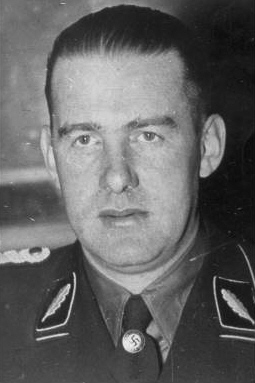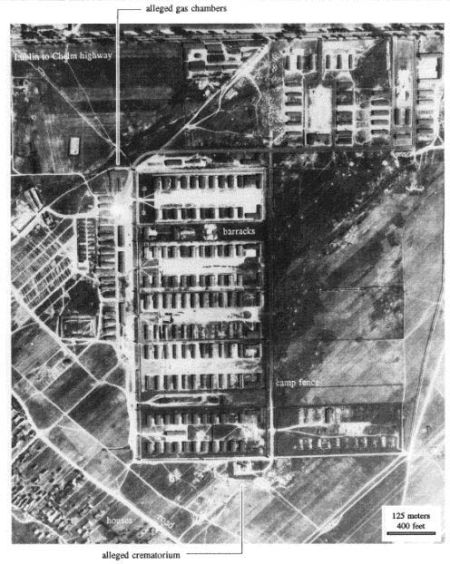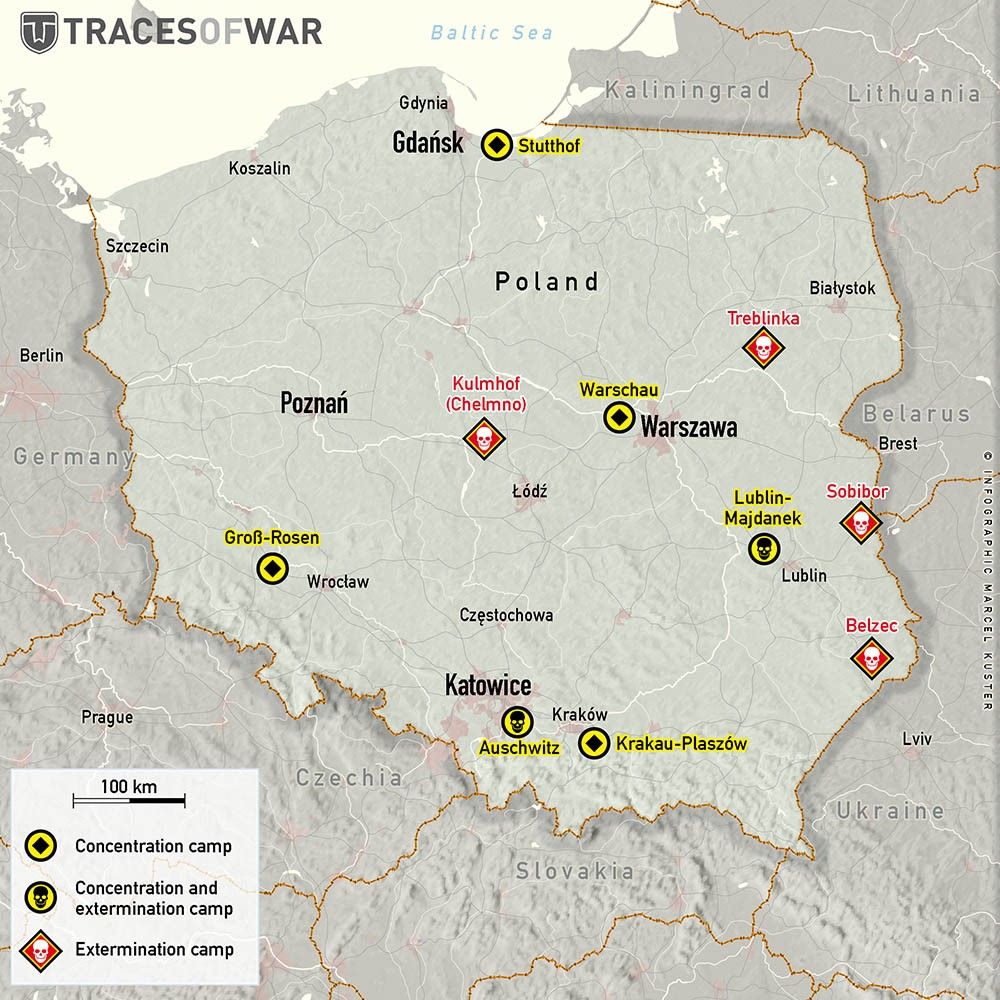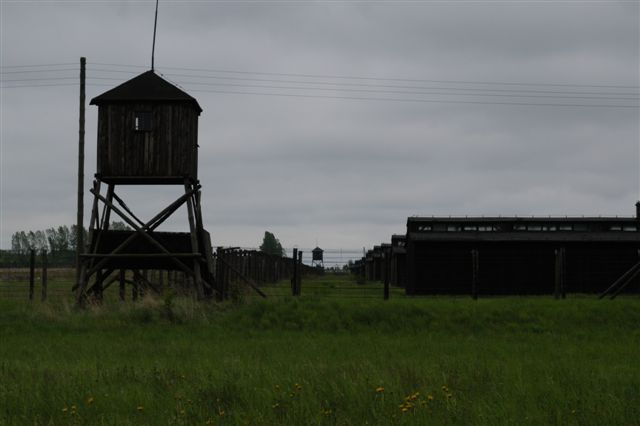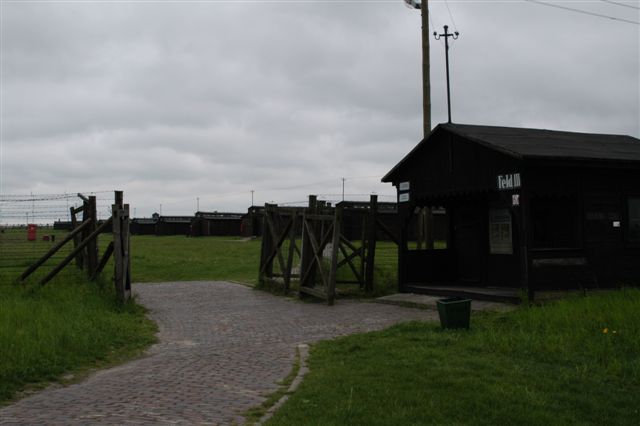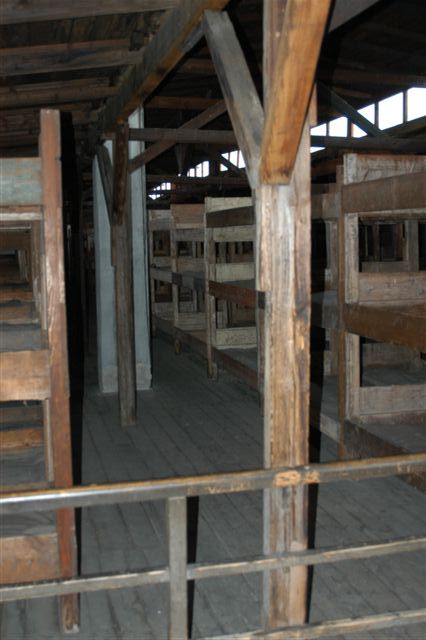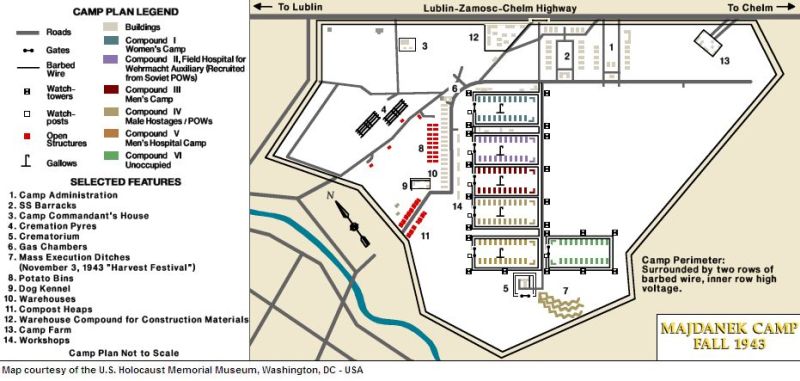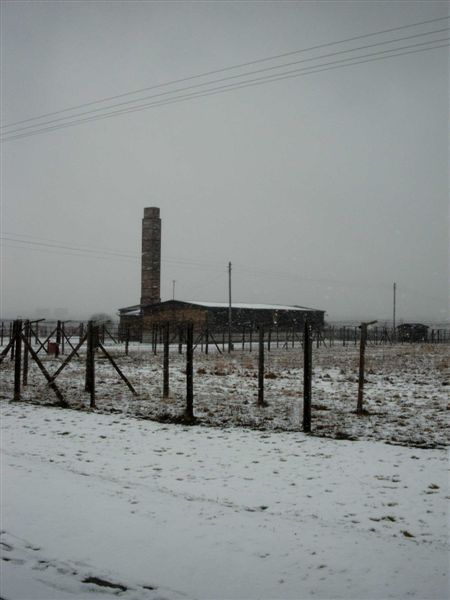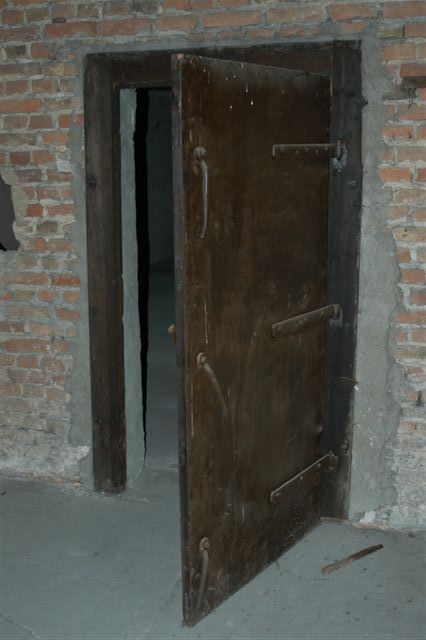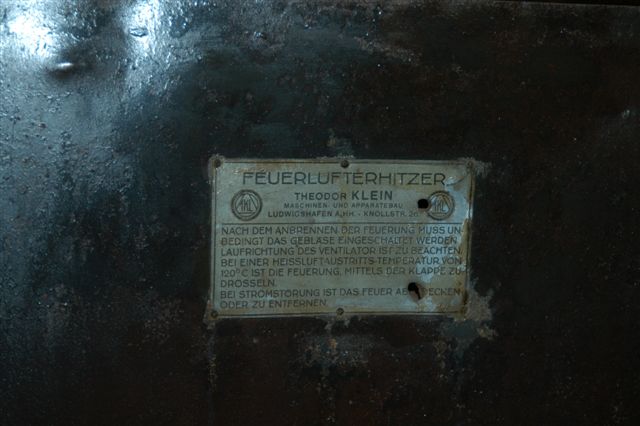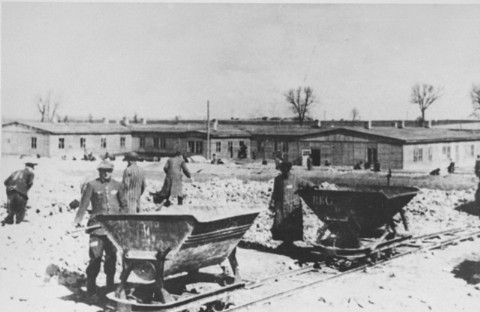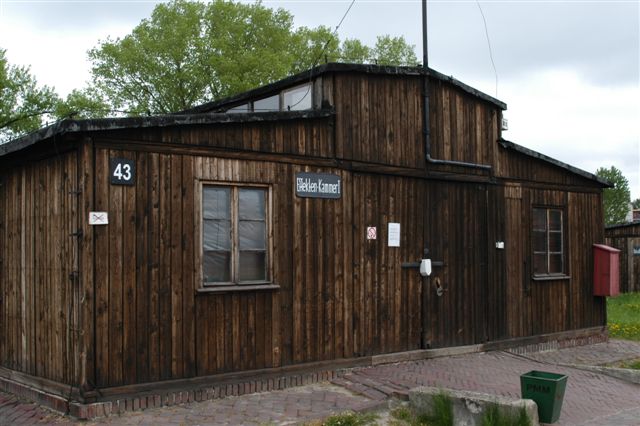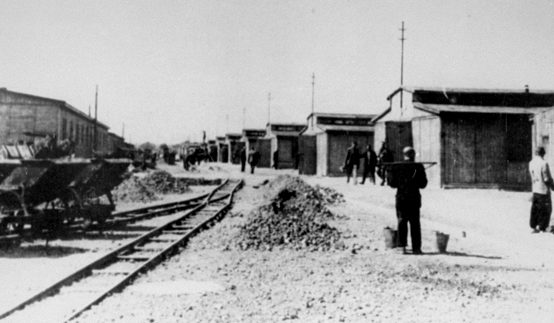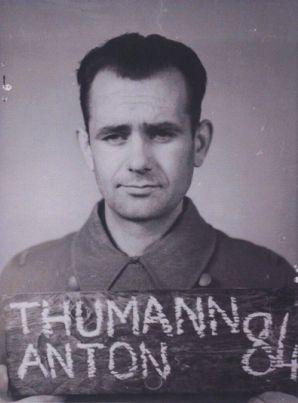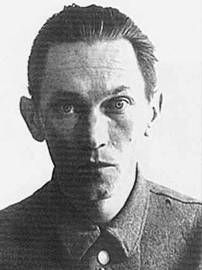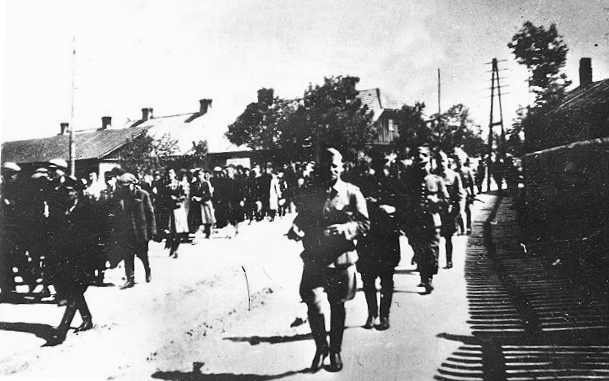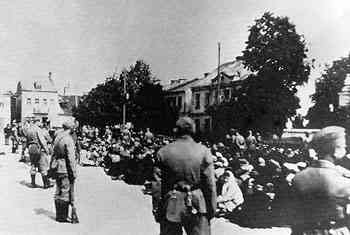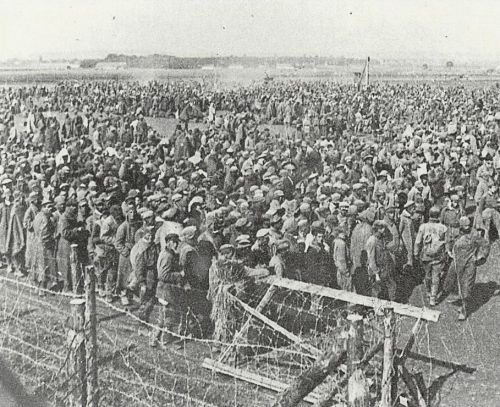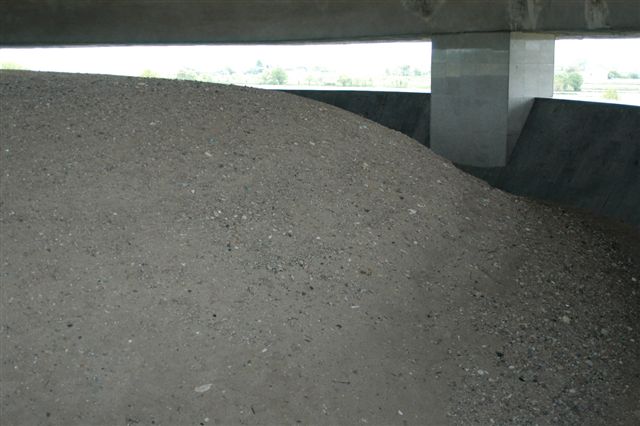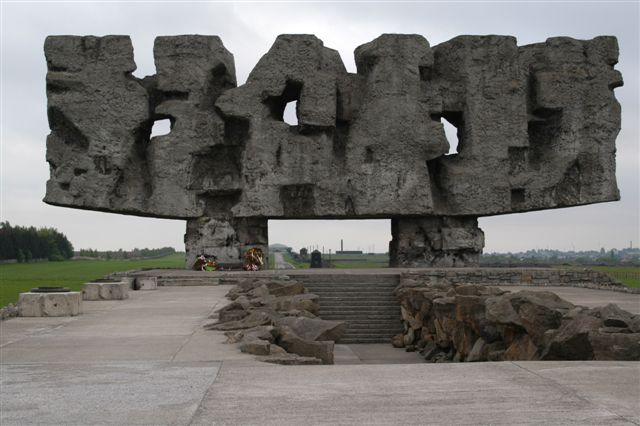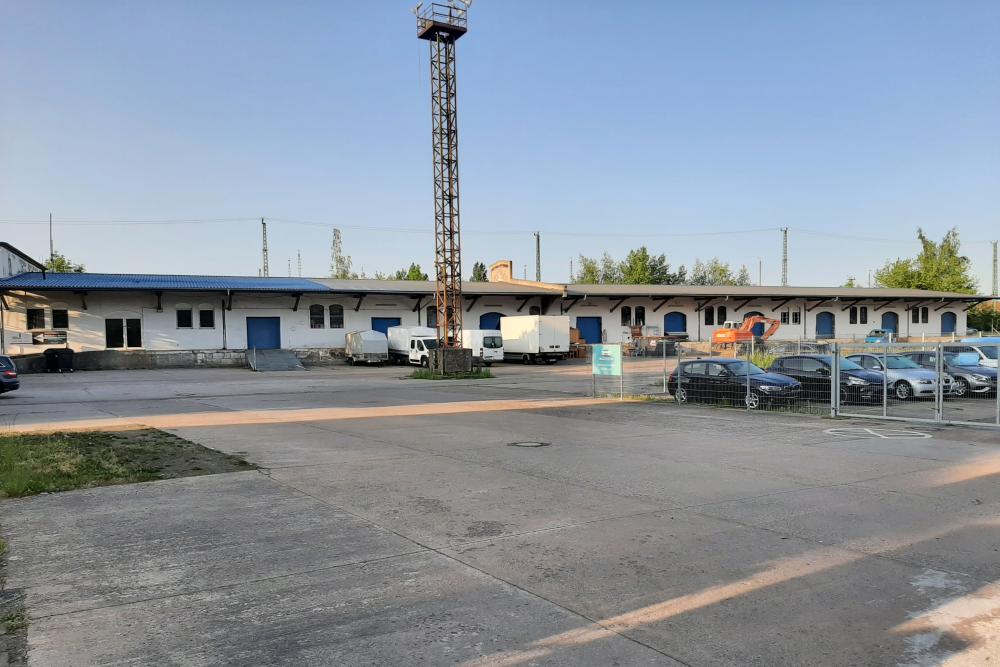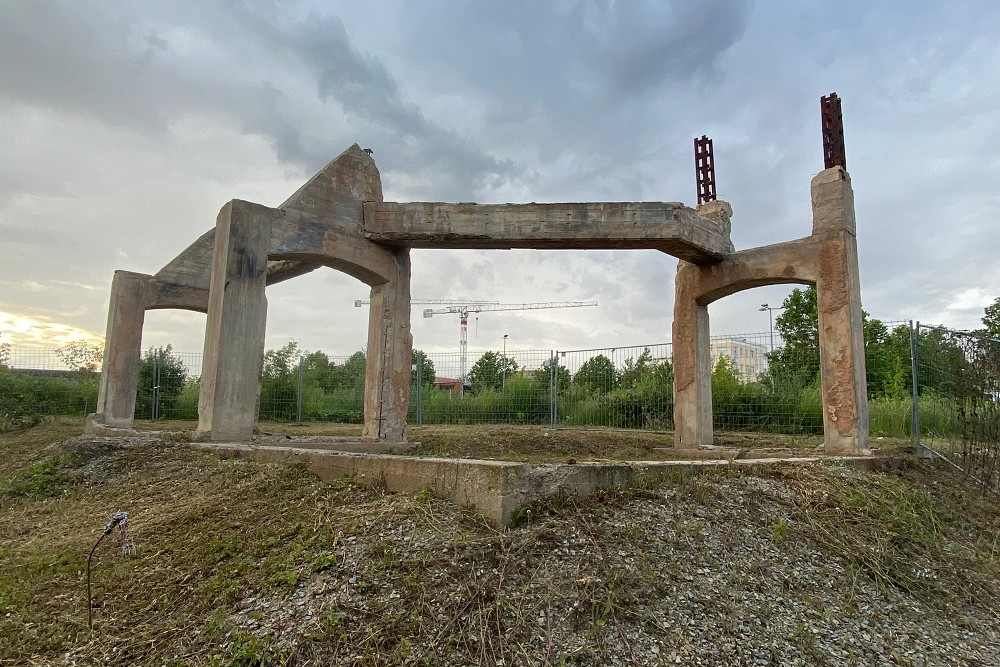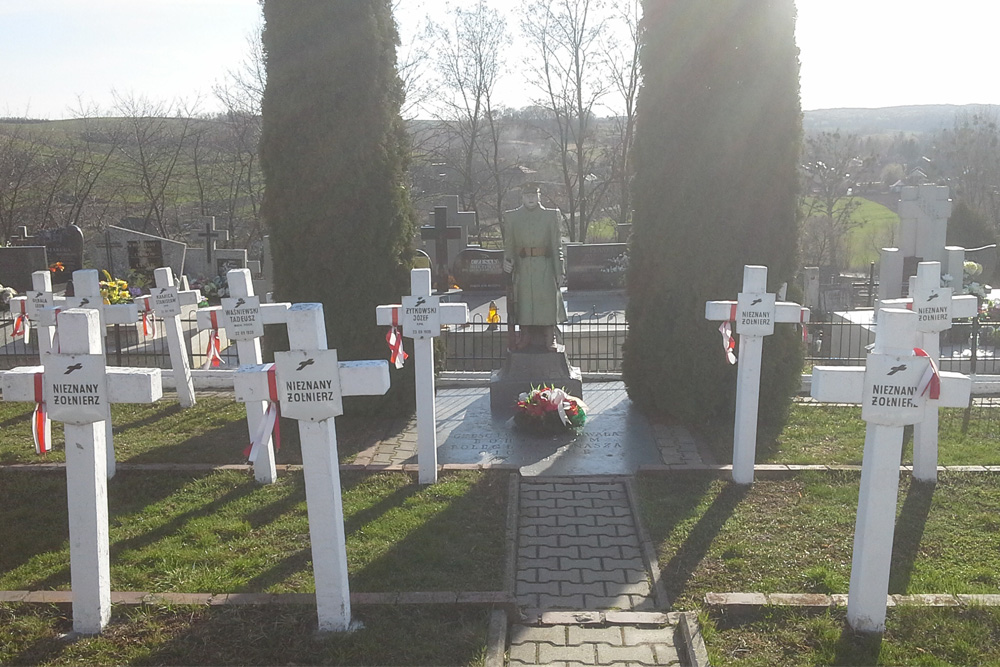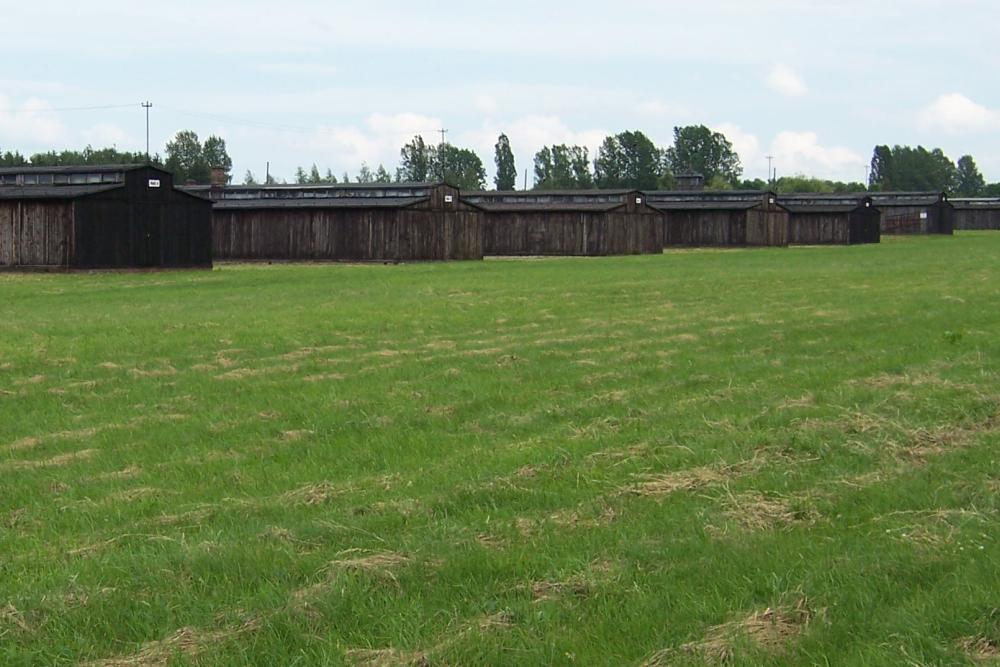Introduction
Nowadays, the location of the former concentration camp Majdanek lies well within the city limits of Lublin, a city in eastern Poland near the Ukrainian border. Today it looks somewhat like a park at some 2,5 miles from the city center. It is surrounded by modern apartment buildings and a Roman Catholic cemetery that was already there before the camp was built. The highway to the Ukraine and Russia runs along the former camp grounds. In the war, this was a major route for the German army to the eastern front and from the fall of 1943 onwards for the retreating German forces.
Occupying an area of some 66,7 acres, Majdanek was the second largest concentration camp after Camp Auschwitz and has been operational for a relatively short time; from October 1941 to July 1944. According to the most recent counts, a total of 150,000 people would have been imprisoned in Majdanek. They were men and women of 54 different nationalities from 28 countries. Out of them, some 80,000, including 60,000 Jews would not have survived the camp. 60 % of them perished because of the abysmal conditions in the camp: hunger, illness, cold and exhaustion. 40 % was gassed, hanged, beaten to death or shot. These numbers however are just estimates because up until today, the exact number of victims has not yet been determined.
Definitielijst
- concentration camp
- Closed camp where people are being held captive that are considered to be anti- social, enemies of the state, criminal or unwanted individuals. These groups mostly do not get a fair trial or are condemned to doing time in a camp.
- Jews
- Middle Eastern people with own religion that lived in Palestine. They distinguished themselves by their strong monotheism and the strict observance of the Law and tradition. During World War 2 the Jewish people were ruthlessly persecuted and annihilated by the German Nazis. . An estimated 6,000,000 Jews were exterminated.
- Majdanek
- Concentration camp nearby the Polish city of Lublin. Originally a POW camp. From 1942 an extermination camp.
Images
The beginning
September 1, 1939, Germany invaded Poland. Pursuant to prior agreements in the so-called Molotov-Ribbentrop Pact, (Pact 23-08-1939) the country was divided between Germany and the Soviet Union. As a result, Lublin became German territory. The city was on the eastern border of German occupied Poland, the so-called General Government. In June 1941, the Germans invaded the Soviet Union. With the occupation of the former Soviet zone in Poland, millions of Jews and Polish citizens found themselves under German rule. Moreover, huge numbers of Red Army soldiers were taken prisoner-of-war during the campaign. It was necessary to find a location were all these soldiers could be imprisoned. This idea was the seed of the construction of camp Majdanek. There would however be no question of a clear and determined planning: rivalry between organizations involved in the construction and the continuously changing nature of the war resulted in Majdanek never getting a specific purpose as a camp. It has been argued Majdanek has always played a provisionary role during its existence.
July 20 and 21, 1941, Reichsführer-SS Heinrich Himmler paid a visit to Lublin. On this occasion he gave SS-Brigadeführer Odilo Globocnik, SS- und Polizeiführer in the Lublin district no more than an informal order to build the camp. Himmler simultaneously ordered SS-Standartenführer Karl Otto Koch to take charge of the entire organization of the camp still to be built. The choice of Koch was a natural one as he had previously gained experience in the administration of Camp Buchenwald. Initially, an area was selected close to the Deutsche Ausrüstungswerke (DAW) – a company run by the SS, located since 1940 near a Judenlager – camp for Jews – on Lipowastreet in the center of town. The Judenlager was some sort of prison with workshops where Polish PoWs of Jewish descent were imprisoned. That summer they started to prepare the grounds for building but only for a short while.
With a possibility bordering on certainty, Himmler wished to entrust the construction of the camp entirely to his personal friend Globocnik. That way he bypassed the Inspektorat der Konzentrationslager (Inspection of the concentration camps), the central agency in Berlin which supervised the building and running of the concentration camps. This inevitably led to a collision with the German civil administration in the General Government which watched with sad eyes how Himmler and his landlord Globocnik wanted to saddle them with an immense concentration camp on their own authority. Both General Governor Hans Frank and the governor of the Lublin district, Ernst Zörner protested against the accomplished fact that without their consent and even within the city limits of Lublin, a full swing concentration camp would be built on the site of the Judenlager. Whether or not the opposition by the civil authorities was instrumental in abandoning the location on Lipowastreet is uncertain though. Another reason may have been that the original plan provided for the housing of so many prisoners (about 150,000) so that it was physically impossible to house that many on Lipowastreet in the middle of town.
Whatever the reason, Globocnik changed his mind under this pressure and Karl Koch decided to establish the camp southeast of Lublin at the thinly populated suburb of the city on the so-called Dziesiata fields. On September 26, 1941, Koch reached an agreement with governor Ernst Zörner and the area was handed over to the SS by the municipal administration. It was a terrain, slightly sloping towards the south and west and bordering in the north on the busy highway to Lwow. It was bordered in the south by the villages of Abramavic and Dziesiata and the outskirts of the city in the west. On the east side lay the fields of the village of Kalinowka. The choice of this terrain had some practical advantages. It was not far from the marshalling yard of Lublin so prisoners could be transferred to the camp on foot. That way, no additional railway had to be constructed. Moreover, a former airfield was close by where the SS had planned large barracks and workshops of the DAW. In this way, workers from the camp were readily available.
The camp was sited close to Majdan Tatarski, an ancient suburb of Lublin where a Jewish ghetto had already been established. Majdanek was named after this suburb. Initially it was a nickname the local population gave to the camp after its establishment. In official records, the name Majdanek was never mentioned though but among prisoners and the SS it was the usual name for the camp. The original official name of Majdanek was Kriegsgefangenenlager der Waffen-SS Lublin (KGL). It is remarkable the description concentration camp was not used. It has been assumed that Globocnik avoided the term to mislead thwarting city governor Zörner because regarding the immense number of Soviet prisoners-of-war, building of a PoW camp was not unusual. As late as April 1943, when the majority of prisoners consisted of others than PoWs, Majdanek officially became Konzentrationslager der Waffen-SS Lublin (KL Lublin).
The location of the future camp was very unusual. Almost all camps in Poland were located far away from centers of population and highways. However, the area where Majdanek was to be built was on the outskirts of a large city on entirely open terrain. There were no natural obstacles like wide rivers or dense forests and the location was visible from all sides. Whatever the reason may have been to build the camp here, it was certainly not with the intention to shield it from the outside world as much as possible.
Definitielijst
- concentration camp
- Closed camp where people are being held captive that are considered to be anti- social, enemies of the state, criminal or unwanted individuals. These groups mostly do not get a fair trial or are condemned to doing time in a camp.
- ghetto
- Part of a town separated from the outside world to segregate Jewish population. The establishment of ghettos was intended to exclude the Jews from daily life and from the rest of the people. From these ghettos it was also easier to deport the Jews to the concentration and extermination camps. Also known as “Judenviertel” or Jewish quarter.
- Jews
- Middle Eastern people with own religion that lived in Palestine. They distinguished themselves by their strong monotheism and the strict observance of the Law and tradition. During World War 2 the Jewish people were ruthlessly persecuted and annihilated by the German Nazis. . An estimated 6,000,000 Jews were exterminated.
- Majdanek
- Concentration camp nearby the Polish city of Lublin. Originally a POW camp. From 1942 an extermination camp.
- Molotov-Ribbentrop Pact
- Monstrous alliance and non-aggression pact between Nazi-Germany and the Soviet-Union in 1939 involving a secret protocol dividing the countries of Eastern Europe.
- PoW
- Prisoner of War.
- Red Army
- Army of the Soviet Union.
- Soviet Union
- Soviet Russia, alternative name for the USSR.
- Waffen-SS
- Name of Military section of the SS.
Images
Construction and lay out of the camp
The official order to build the camp was issued on September 22, 1941, by SS-Oberführer Heinz Kammler, an engineer and chief of the Amt II Bauten (Buildings) of the Hauptamt Haushalt und Bauten der SS (main office of economics and construction), part of the Zentralbauleitung der Waffen-SS und Polizei (central agency for supervision of construction) in Lublin.
The first blueprint of Majdanek, the part where the prisoners would be housed, dates back to October 7, 1941. In the original plans, the barracks would be divided into 10 sections. It was to be surrounded by a double barbed wire fence with 25 watchtowers on the outside. The distribution of the barracks over the 10 sections was identical in principle: two rows perpendicular to the fence surrounding each section. The centers of each section would serve as parade ground with two kitchens on one side and a latrine on the other. A total of 236 barracks was provided for of which 207 were reserved for prisoners.
Construction started in October 1941. A group of Polish Pows of Jewish origin was taken out of the labor camp on Lipowastreet in Lublin to the building site every day and began leveling the terrain for the first five sections. That same month, about 2,000 Soviet PoWs were brought in from the camp in Chelm to speed up construction. They were billeted on the premises, in the open air without any protection. No wonder the mortality among them was very high. The two groups of prisoners erected the fences and the barracks of the first section of the camp. The speed of the work must have been terrible as on November 11, 1941, Heinz Kammler reported to Oswald Pohl, chief of the SS-WVHA (Main Office of Economics and Administration) in Berlin, 10,000 prisoners could be housed in the camp and during the next days, there would be space for another 10,000.
On March 23, 1942, Karl Koch, meanwhile appointed first camp commander, approved the final plans for the camp. Eventually, 250,000 prisoners would be housed in Majdanek; in comparison, Lublin counted 120,000 inhabitants at the time. The camp would be eight times larger than was provided for in the plans of October 7. The camp would roughly be split into two parts: one for the prisoners consisting of three gigantic complexes with a large number of workshops and warehouses and the other part for the SS with offices, shops and a hospital.
The Zentralbauleitung der Waffen-SS und Polizei (central building agency of Waffen-SS and police) in Lublin was ultimately responsible for the construction work. Of course, prisoners were employed to this end but also contractors who employed forced laborers. An estimated 35 construction companies have worked on the continuous expansion of Majdanek between 1941 and 1944. German firms also offered their services, without bothering about any ethical issues. For instance, on September 18, 1941 the Senking Company in Hildesheim issued an offer for kitchen facilities for up to 5,000 prisoners. In November and December 1941, the Kori company in Berlin offered to build a crematory and Jahn & Petrlick Holzbau in Rudolfstadt was very eager to deliver 100,000 spades, pick axes and the required bricks. When the camp was filling up fast from January 1942 onwards, barracks were added to each section, often of abysmally poor quality: thin boards that did not fit, no windows and roofs of no more than paper thin boards covered with tar paper.
Mid-1942, white gravel was spread between the two barbed wire fences and in the so-called zone of death, a strip 5 yards wide between the barracks and the inner fence. The white gravel had a purpose: at night when the zone was illuminated, a human silhouette could be observed better. In case a prisoner entered the zone, he was fired upon without any warning from one or more of the 18 watchtowers, 29 feet high so all sections were covered. There was a rotating searchlight on top of each tower and on the fence poles around the five sections, 130 light bulbs were mounted. All road and paths within the camp were illuminated at night. In 1943, the inner fence was electrified and in order to enhance security, at the entrance of each section a sentry box was built where guards checked everyone entering or leaving a section. When in 1944, the danger of partisan attacks increased, eight small bunkers were built on the east side of the camp.
Eventually, the camp was expanded into a gigantic complex, divided into six parts called Felder of fields. Each Feld was surrounded by its own barbed wire fence. This way, the various categories of prisoners were physically separated. Each Feld consisted of two rows of barracks surrounding an open square where roll calls were held and a gallows was erected. Initially, Soviet prisoners-of-war were housed in Feld I, but later on, women were also housed in a separate section. Feld II was completed in the spring of 1942. During the entire existence of the camp it was exclusively meant for male prisoners, predominantly Jews. From the spring of 1943 onwards, there was also a lazaretto for Russians who had fought on German side and had been seriously injured. Feld III was also exclusively for males. The first of them arrived in May 1942. Initially they consisted of captured partisans and later of political prisoners, Jews from the liquidated ghettoes of Warsaw and Biyalistok and sick prisoners from Buchenwald, Camp Dachau and Sachsenhausen as well. In April 1944, Feld III was evacuated and the prisoners deported to Camp Auschwitz and Groß-Rosen. Up until the liberation, Feld III was not in use anymore. Feld IV was completed in the spring of 1942. Here, hostages of the German police, political prisoners and prisoners-of-war were housed. Feld V was in use from October 1942 onwards but was only finished as late early 1943. Until September 1943 it was inhabited by predominantly Jewish women and children. After they had been transferred to Feld I, the 22 barracks were used as lazaretto for males. Feld VI has never been in actual use. Here, additional barracks, gas chambers, crematories and industry were planned but the grounds were still barren when the camp was liberated.
In Majdanek, there was also space for agriculture. In the spring of 1942, a farm was established. First to appear outside the fence was a market garden. The rural area east of the camp was used for growing grain and keeping livestock. Mid-1943, 30 underground warehouses were built for the potatoes and vegetables which were being grown on its 247 acres of land. There even was a hothouse for growing flowers and vegetables.
Billeting the SS staff and the guards caused the inevitable problems during the first years. Initially, the office of the camp management was located in a building on 12 Ogrodowastreet in Lublin and SS officers and subaltern officers were housed in homes on streets near the camp. The SS guards were housed in a school building on 12 Bernardynskatreet. These lodgings were only temporary as from September 1942 onwards, offices and housing for the SS appeared in the camp itself. They were being built by prisoners under supervision by specialist of various contractors and great care was taken, these lodgings would be as comfortable as possible. There even was a casino. This construction work was completed in the spring of 1943.
In the period from the spring of 1942 until the autumn of 1943, all roads, drainage ditches, concrete passages, paths outside the camp and fences were completed. In the spring of 1942, the speed of expansion slowed down considerably though. Building material was harder to get as raw materials became scarcer and the capacity of the railway infrastructure was used more and more for transports to the eastern front. In July 1944, shortly before the evacuation, 280 buildings – including 227 barracks – stood on the camp grounds eventually. In addition, 15,5 miles of sewage and water pipes had been laid, over 2,4 miles of paved roads and over 3,4 miles of double barbed wire fences constructed. From then on, Majdanek could simultaneously house 45,000 to 50,000 prisoners in overcrowded barracks.
Definitielijst
- Jews
- Middle Eastern people with own religion that lived in Palestine. They distinguished themselves by their strong monotheism and the strict observance of the Law and tradition. During World War 2 the Jewish people were ruthlessly persecuted and annihilated by the German Nazis. . An estimated 6,000,000 Jews were exterminated.
- Majdanek
- Concentration camp nearby the Polish city of Lublin. Originally a POW camp. From 1942 an extermination camp.
- Mid
- Military intelligence service.
- Waffen-SS
- Name of Military section of the SS.
Images
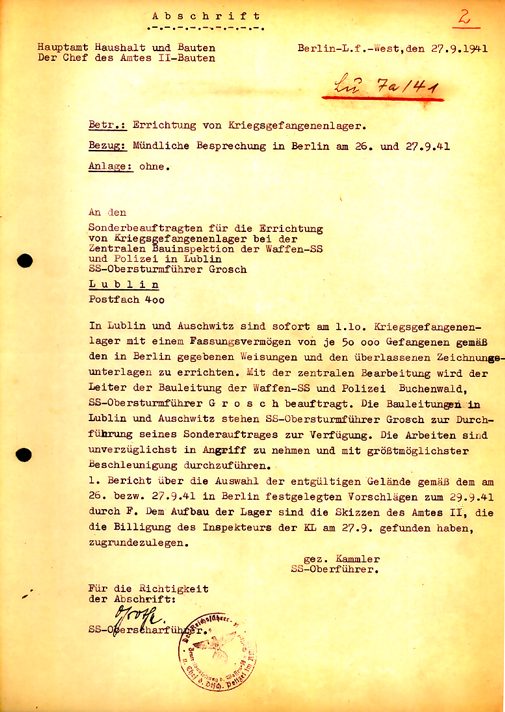 Kammler’s order for the construction of the camp. Source: http://www.ghwk.de.
Kammler’s order for the construction of the camp. Source: http://www.ghwk.de.Gas chambers and crematories
From the second half of 1942 onwards, large scale murder of prisoners was mainly carried out in gas chambers. Construction of the gas chambers was begun in August 1942 and was completed the following August. Preserved blueprints show that the gas chambers in Majdanek were initially designed as disinfection chambers. During construction, it was decided however to use them for the extermination of prisoners.
The gas chambers were suitable for use with carbon monoxide gas as well as Zyklon-B. In extermination camp Belzec, it had been discovered that Zyklon-B yielded "better results" hence it was also used in Majdanek on a growing scale. The gas chambers were built of ceramic bricks, a concrete floor and a roof of reinforced concrete. The large metal doors of the chambers were gas tight and were hermetically sealed by two iron rods fastened with nuts. The chambers were installed by the Berlin company of Auert.
The SS fed carbon monoxide into the chambers from large steel cylinders. The gas was distributed by means of a perforated tube mounted on the walls of the chamber. Zyklon-B was added through a special chute in the concrete roof. Zyklon-B was combined with warm air from a stove, blown into the chamber by a fan. Experiments had shown that the lethal effect of Zyklon-B increased when the temperature inside the chamber exceeded 800 F. The stoves were installed by Theodor Klein Maschinen- und Apparatenbau in Ludwigshafen.
The building containing the gas chambers was called the bunker and was fenced in by barbed wire and a closed wooden fence. Trucks carrying prisoners entered through a gate. The extra high roof of the bunker was originally part of the process of disinfection of clothing but when the mass extermination in Majdanek gained momentum, it was no more than a camouflage for the gas chambers sited below.
Already during construction of the camp in 1941, a crematory with five ovens was ordered from the Berlin firm of Kori. Before it was delivered though, the number of deaths in Majdanek rose sharply. In order to be able to burn the corpses anyway, a crematory was transferred from Sachsenhausen and installed in June 1942. It consisted of two separate iron ovens, fueled with oil. In each oven, two to five corpses could be cremated simultaneously in an hour. The daily capacity of one oven was about 100 corpses. Cremation continued day and night.
As the number of corpses increased steadily and the existing ovens were utterly insufficient, the Zentralbauleitung der Waffen-SS und Polizei in Lublin was informed by the SS-WVHA on January 21, 1943 that five ovens would be delivered as soon as possible. On June 24, the Kori plans were approved and installation was begun in July. Early September 1943, the crematory was operational. The new building was made of wood and stood on a high foundation. It housed an office for the manager of the crematory, a large room where corpses could be stored, a room with a concrete table for dissection and a storage for coal. Five ovens were installed in the large central hall. Coal was used as fuel and they were connected to a 40 feet chimney. Temperature inside the ovens could reach 12900 F. At this temperature, cremation of the corpses took about 15 minutes.
Definitielijst
- Majdanek
- Concentration camp nearby the Polish city of Lublin. Originally a POW camp. From 1942 an extermination camp.
- Waffen-SS
- Name of Military section of the SS.
- Zyklon-B
- Poison gas that was systematically used in German extermination camps, primarily to murder Jews.
Images
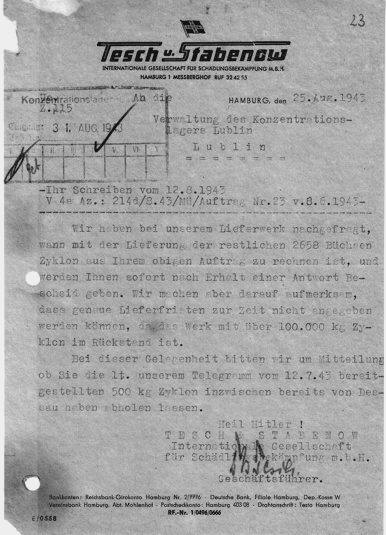 Delivery of Zyklon-B. Source: http://www.ghwk.de.
Delivery of Zyklon-B. Source: http://www.ghwk.de.The commanders
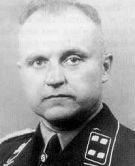 |
The first commander of Majdanek, from September 1941 until August 1942, was SS-Standartenführer Karl Otto Koch, the man who had been ordered by Himmler to take charge of the organization of the building of the camp. He was a highly experienced camp commander who had previously served in Esterwegen, Sachsenhausen and Buchenwald. During his tenure, he appropriated large amounts of money and valuables from murdered Jewish prisoners; the reason why he was relieved of his post in Majdanek. He was arrested on charges of fraud, embezzlement and insubordination. He was sentenced to death and executed by a firing squad on April 5, 1945, shortly before the end of the war. |
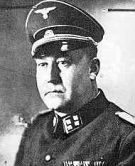 |
Koch was succeeded by SS-Obersturmbannführer Max Kögel, up to then commander of Ravensbrück. As to cruelty, Kögel came a close second to Koch. In the short period he was in charge of the camp, between August and October 1942, the mortality was extremely high and construction of the gas chambers was put out to tender. Following his departure from Majdanek, he served as commander of Flossenburg until the end of the war. A British military tribunal sentenced him to death in 1946 but he committed suicide before his sentence could be executed. |
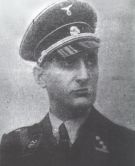 |
In November 1942, the third commander took office: SS-Sturmbannführer Hermann Florstedt who had served in Buchenwald with Koch. His tenure is typified by excessive cruelties and mass liquidations. Florstedt himself took part in the selection of prisoners unfit for labor and who were subsequently murdered. Just like Koch, he stole jewelry, gold and money from the Jews which led to his downfall as well. He had to account for it before a special SS court, was found guilty and relieved of his post in September 1943. On April 15, 1945, he was executed by the SS. |
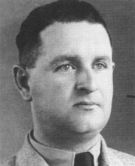 |
SS-Obersturmbannführer Martin Gottfried Weiss succeeded Florstedt in November 1943. Conditions in the camp improved slightly under Weiss: beating prisoners was prohibited, roll calls were shortened and even food was delivered from outside the camp. All this did not apply to Jews and Soviet prisoners-of-war by the way. The "improvements" were not applied for humane considerations but more for raising productivity of the prisoners. After the war, Weiss was sentenced to death by an American military tribunal and executed. |
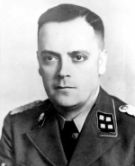 |
Weiss was succeeded in May 1944 by the fifth and last commander, SS-Oberststurmbannführer Arthur Liebehenschel, former commander of Auschwitz I. During his tenure, the camp was evacuated in July 1944. After the war, Liebehenschel was sentenced to death and executed. |
Definitielijst
- Jews
- Middle Eastern people with own religion that lived in Palestine. They distinguished themselves by their strong monotheism and the strict observance of the Law and tradition. During World War 2 the Jewish people were ruthlessly persecuted and annihilated by the German Nazis. . An estimated 6,000,000 Jews were exterminated.
- Majdanek
- Concentration camp nearby the Polish city of Lublin. Originally a POW camp. From 1942 an extermination camp.
Camp life
The procedure regarding the arrival of prisoners in Majdanek was comparable to those in most other camps. The major part of them arrived from ghettoes, prisons and other camps by freight train, tightly packed in cattle trucks without food, water and sanitary facilities. Smaller transport, usually from Lublin and surroundings, arrived in trucks. The trains arrived on a siding of the marshalling yard in Lublin, about a mile from the camp. As soon as the doors of the cars were opened, the people were forcibly removed amidst the yelling by the SS. They were lined up in rows of five and rushed to the camp in double time, surrounded by hordes of SS men armed with machineguns.
Zacheusz Pawlak arrived in Lublin on January 8, 1943 on a transport from Radom:
- "We had to run fast. Some guards had dogs on a leash, barking terribly and continuously flashing their teeth in the direction of the prisoners. The dogs were specially trained: if a prisoner stepped even a little out of line the dogs immediately jumped on him. The column was rushed on by screaming and beating SS men."
After the newcomers had passed through the gate of the camp, they went directly to shed 44 where all their possessions were taken away from them, carefully registered and stored. The people were not to possess anything from then on. Thereafter, they had to undress completely and they were herded naked to the bath house, regardless of the weather. Here, a pair of blunt clippers was used to cut off all body hair and then they were immersed in concrete tubs containing a lysol solution in order to be disinfected. Only then came the real bath where hot and cold water were alternated at random. Finally the prisoners received their camp garb, no more than rags and often of the wrong size.
Next, a shed on a certain Feld was allocated to them and then they were registered, completing lots of forms with personal data. Every new prisoner was given a number on his clothing. From that moment on, a person simply had no name anymore, he had become a number, literally speaking. In Majdanek, the system of counting differed from those in other camps where numeric count was simply continued when new transports arrived. In Majdanek, the count never exceeded 20,000 for men and women respectively. New arrivals were simply given the number of prisoners who had died. The number was printed on a piece of white linen and attached to the left breast of the coat and on the left trouser leg above the knee. The prisoners also wore a triangle above the number in a color designating the reason for their imprisonment. In the center of the triangle was a character showing the nationality of the wearer.
After all of these formalities were completed, the prisoners were instructed about the line up during roll call, donning and taking off of their caps, marching in Arbeitskommandos and order in the barracks. They were now entirely subjected to the camp regime. This meant that each day – from morning to evening roll call – consisted of work under maximum and impossible pressure. Those who could not keep up, risked a beating at the very least.
In autumn and winter, the prisoners were to rise at 05:00 in the morning, in spring and summer at 04:00. They then had to dress quickly, make their bunks, go to the latrine, drink a cup of surrogate coffee or tea made from weeds and clean the barracks. Then to roll call, accompanied by continuous yelling and swearing by the guards and Kapos – prisoners charged with maintaining order in the barracks. Weather or no weather, roll call started at 06:00 in autumn and winter, 05:00 in spring and summer. The prisoners were to stand in front of their barracks and line up perfectly. while they were counted by the Blockführer – head of the block – who reported to the Rapportführer. At the command: "Stillgestanden, Mützen ab, Augen links" – attention, caps off, eyes left – everyone had to follow faultlessly. If someone moved or turned his head, he was beaten black and blue. Initially the sick were supported by their fellow prisoners. later on they had to lie down in mud or snow. Only from November 1943 onwards, they were permitted to stay in their barracks during roll call.
On average, morning roll call took 30 minutes, that is when the number of prisoners in the various barracks matched with the records of the camp administration. If it did not, another roll call was held which took another half hour at least. At the command: "Arbeitskommando formieren" – labor commands, form up – the prisoners ran off to line up in their Arbeitskommandos, accompanied by yelling and beatings. Then they were marched off to their work.
Noon break was at 11:45 sharp. Prisoners working in or near the camp were to run back to their Feld and were frisked by SS guards on entering. Next the prisoners were counted again in the parade ground, the so-called Zell appel. When a prisoner was missing, a search was started which could last for hours. All the time the prisoners were to remain on the parade ground without food. In case everything was all right, the prisoners were given a watery substance, passing for soup in their mess tin. It was usually made up of turnips, rotten potatoes and dried leaves of cabbage. After this "lunch" they had to wash up their tins and put them back in the shed.
At 13:00 the prisoners went back to work. In spring and summer this ended at 18:00, in autumn and winter at 16:30. Utterly exhausted and usually beaten black and blue, they were to run back to their sheds in the camp. Those who had died during work were carried along. Next came evening roll call which could well take hours, in particular when a prisoner had escaped or fallen asleep somewhere. These escapees were immediately hanged in the parade ground in the presence of everyone. This was abandoned though in the spring of 1943 when because of the war effort as little laborers as possible should be lost. That also was the reason roll calls took less time from then on.
After evening roll call, the prisoners were again given something to eat which could hardly be called food. It usually consisted of surrogate coffee or some other brew, a piece of bread and some unpeeled potatoes. Seldom they received a spoon full of marmalade with their bread, margarine, a chunk of sausage made from horse meat or cheese. Next there was time for "relaxation." This usually meant some talking to other prisoners but it also happened they were forced by the SS to continue working in the camp. At 21:00, the lights were switched off and there was to be absolute silence.
Definitielijst
- Majdanek
- Concentration camp nearby the Polish city of Lublin. Originally a POW camp. From 1942 an extermination camp.
- surrogate
- Literally meaning substitute. Due to a shortage of raw materials during World War two various surrogate products were sold. Surrogate coffee is an example of a product that was offered instead of real coffee.
Images
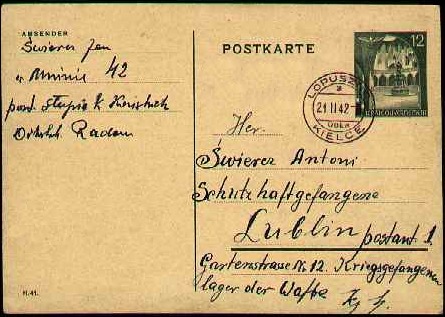 Post card to Majdanek. Source: http://www.deathcamps.org.
Post card to Majdanek. Source: http://www.deathcamps.org.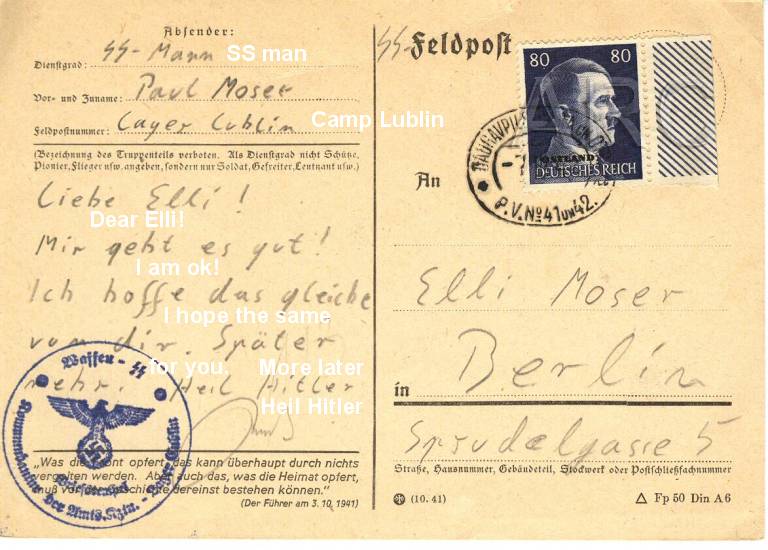 Post card from Majdanek. Source: http://www.deathcamps.org.
Post card from Majdanek. Source: http://www.deathcamps.org.Arbeitskommandos
Undernourished as the prisoners were, they had to perform extremely hard work. Between 1941 and 1944, building in the camp continued. In this period, some 70 Arbeitskommandos have performed all sorts of construction work from ground work to building barracks, watchtowers, fences, warehouses and offices. The ground work claimed the most energy. Large tracts of terrain had to leveled and sand and rocks were disposed of in large quantities. When constructing infrastructure, less prisoners were deployed, simply because skilled workers like electricians and plumbers who were scarce, were required for this.
Some 20 Arbeitskommandos were charged with the daily cleaning of the camp. The so-called Feldkolonne was charged with cleaning the barracks and shoveling snow during the winter months. In addition, in each Feld there were 15 to 20 prisoners charged with disposing of the contents of the latrines, the so-called Scheißkommandos – shit commands. As this was by far the dirtiest work, Jews were mainly employed. This job had one advantage: because these prisoners smelled so terribly, they were usually left alone by the SS. There also were special Kommandos for all sorts of jobs. For instance disposal of garbage from the SS barracks and offices, cleaning dog houses and stables and maintaining buildings and gardens.
The work that was done in the many different workshops in Majdanek merits separate mention. There was a carpentry shop for making and repairing bunks and tables. This command also renovated sheds. A forgery provided all sorts of tools and the SS could have their broken radios and electric stoves fixed in an electricity workshop. From early 1943 onwards, there even was a completely equipped garage where a group of 20 prisoners maintained vehicles and converted gasoline and diesel engines to gas fueled engines.
From 1943 onwards, about 300 prisoners, mainly women, were employed in the various tailor shops and a completely equipped shoemakers shop. Clothes of those who had arrived in transports were mended for use by German citizens. Winter clothing for the German military was also produced here and the uniforms of the SS guards were repaired. The Effektenkammer was the warehouse where the possessions of prisoners were stored. Clothing of the murdered Jews was sorted and searched for valuables before it was transported to Germany by the wagon load.
From early spring until late autumn, some 1,500 prisoners were put to work on the various farms mentioned earlier which were run by the camp. This was exceptionally hard work: digging, ploughing, mowing, planting, harvesting in the open air without any protection whatsoever from the weather. Food for prisoners and the SS was delivered by other Kommandos and distributed among the various kitchens on the vast premises.
Finally there was the Sonderkommando whose members were strictly isolated from the other prisoners. As the name suggests, they were no normal prisoners doing the usual handiwork of their fellow inhabitants. Their task consisted of taking the corpses out of the gas chambers and burning them in the crematories. The part of the Sonderkommando that burned corpses in the forest of Krepieckin 1942 and 1943 was called the Waldkommando. The fate of the members of the Sonderkommando was a foregone conclusion; they were executed regularly as unwilling witnesses of crimes that had to be kept secret forever.
Definitielijst
- Jews
- Middle Eastern people with own religion that lived in Palestine. They distinguished themselves by their strong monotheism and the strict observance of the Law and tradition. During World War 2 the Jewish people were ruthlessly persecuted and annihilated by the German Nazis. . An estimated 6,000,000 Jews were exterminated.
- Majdanek
- Concentration camp nearby the Polish city of Lublin. Originally a POW camp. From 1942 an extermination camp.
Images
Forced labor
Companies that were part of the SS empire, such as the Deutsche Ausrüstungswerke – DAW – and the Ostindustrie GmbH – in short Osti – could freely make use of the pool of mainly Jewish forced laborers that was available in the camps. Majdanek was no exception. As early as 1940, the DAW used prisoners from the labor camp on Lipowastreet in Lublin and after it was opened, Majdanek could not avoid playing its part in meeting the demand of laborers. In 1942, the DAW opened a workshop in the camp where 60 men were employed repairing skis. The next year a shoemakers shop was opened that employed over 200 forced laborers.
The Ostindustrie GmbH had four plants in Majdanek, one where brushes and baskets were made, a brickyard, a metal workshop and a small pharmaceutical enterprise. In the metal shop, 240 prisoners disassembled broken weapons and refurbished tools. Dr. Sekel, the physician of the SS garrison in Lublin was in charge of the pharmaceutical enterprise employing some 35 prisoners, mainly Jewish physicians and pharmacists from the Netherlands.
Outside Majdanek, forced laborers from the camp were also employed. For instance, the SS-Bekleidungswerke – clothing firm – had its own labor camp and 1200 prisoners were taken there every day, initially to build and expand the camp and later to sort clothing. The Zentralbauleitung der Waffen-SS und Polizei in Lublin employed forced laborers from Majdanek to establish a supply base for SS units in the occupied areas in Russia. In 1942 and 1943 prisoners constructed a huge depot for the Höhere SS- und Polizeiführer of southern Russia and the Caucasus where large quantities of food and military goods were stored. This way, the Lublin district grew into one of the largest centers of forced labor in occupied Europe.
In addition to the SS enterprises, others also employed forced laborers from Majdanek. The Zentralbauleitung had hundreds of prisoners build a gas factory in Lublin. Civil agencies and organizations did not lag behind. Prisoners worked in the city laundry, the power plant and the railways. Various contractors employed the cheap labor, on average 45 prisoners per building site. The SS-WVHA set the prices. Civil enterprises paid 4 Reichsmark a day for skilled workers and 3 for unskilled. SS enterprises on the other hand paid 30 pfennig per day for a laborer, skilled or unskilled. From June 1, 1943 onwards, when the enterprises were struggling economically because of the war effort, the prices were made equal to those of the SS.
Definitielijst
- Majdanek
- Concentration camp nearby the Polish city of Lublin. Originally a POW camp. From 1942 an extermination camp.
- Waffen-SS
- Name of Military section of the SS.
Images
The death factory
Owing to the extremely poor and small amount of food of less than 1000 calories per day alone, large groups of prisoners were more or less unavoidably marked for death. They wasted away fast and visibly, their skin turned a bluish gray and in the long run they became totally apathetic. In Majdanek these persons were called gamle, a word from the German-Silesian dialect meaning idiot. In the last phase of starvation they were beyond help. They died from simple hits with rifle butts and sticks, in the barracks, during work or in the so-called Gammelblöcke, sheds for those for whom any further help was useless. When they still showed some signs of life, they disappeared into the gas chambers.
Not just the hunger but beatings and executions also took their toll among the prisoners. In the case of penalties, the most widely applied method was a lashing with a whip. Prisoners were beaten even for the slightest violation of the camp rules until they lost consciousness. Thereby it was utterly unimportant whether the victim was sick or dying. Just being Jew or Roma was also ample reason to be beaten. Violation of camp rules was not at all necessary really: whenever the guards felt like it, they struck at will.
An official punishment for a transgression of the camp rules was preceded by a report from the guards to the camp management. Not only individual prisoners but entire groups were also subjected to these sanctions. These punishments always took place after roll call. The lashing was administered on a special table called the Block. Among prisoners the torture apparatus was - off the record - known as the concert piano. The tabletop was semicircular and made of thick planks. The victim was to lay on his stomach and two SS men turned his arms between his shoulder blades. Two other SS men subsequently started lashing him with whips or sticks. The number of lashings varied between 10 and 200 or more. The victim was to count the number of lashes himself. As many of them did not speak German, this frequently went wrong and the prisoner had to start counting all over again. It goes without saying these lashings caused large open wounds on the back and these in turn led to festering infections that were scarcely treated if at all. Irreparable damage to internal organs like kidneys was the rule rather than an exception.
In addition, they always risked ending up on the pillar. That was a wooden pole from which a person was hanged at the wrists with his hands bound behind his back and his feet just above the ground, often with dislocated shoulders as a result. More serious violations of the camp rules, like attempts at escape, were always punished with death by hanging. That was always done during evening roll call in the presence of the camp commander, a physician and the SS guards of the Feld in question.
From the autumn of 1943 onwards, the number of penalties decreased for a simple reason: afterwards the prisoners were no longer able to work and all available manpower was badly needed. This did not mean though that SS guards and Kapos changed their behavior in any way. One of the most cruel SS men was the commander of Feld III, SS-Hauptscharführer Heinrich Groffmann who went searching for his victims during roll call. After he had selected a victim he habitually struck the person down with one blow on the liver, the stomach or an ear. SS-Unterscharführer Gossberg specialized in the crushing of skulls and SS-Unterscharführer Franz Joseph Fritsche beat prisoners to death for no reason at all with a spade or a rifle butt.
The names of SS-Hauptscharführer Emil Laurich, SS-Oberscharführer Erich Mühsfeld and SS-Hauptsturmführer Hermann Hackmann were synonymous with indescribable cruelties. The most feared guard in Majdanek was SS-Obersturmführer Anton Thumann, nicknamed the henchman of Lublin. He served in the camp between February 1943 and May 1944 after he had been punished with a transfer to Majdanek from Groß-Rosen following a charge of corruption. Every prisoner knew him, some even thought he was the camp commander. According to the prisoners, Thumann was a tall, lean, handsome man, always well dressed and wearing gloves. He was an extreme sadist an inseparable from his huge dog Boris. Various stories about his behavior have been preserved. For instance, one day he drove into a group of prisoners on his motorcycle. He selected two of them and tied their hands to his motorbike with a rope. Then he accelerated and towed them across the camp grounds until nothing more was left of them than a unrecognizable bloody mass. He also had the habit to administer 400 or more whip lashes on his own initiative. Thumann was executed by the British on October 8, 1946 after having spread death and destruction in camp Neuengamme in the last year of the war.
Up until today, it still has not been determined exactly how many prisoners actually perished in Majdanek. Since the liberation of the camp, various estimates have circulated. The most recent research by Tomasz Kranz, a historian from Lublin, in 2005 arrives at a number of some 78,000.
Definitielijst
- Majdanek
- Concentration camp nearby the Polish city of Lublin. Originally a POW camp. From 1942 an extermination camp.
Images
Aktion Erntefest
The sinister reputation Majdanek has earned in the history of the Holocaust is for a part attributable to the events on just one day in November 1943 during Aktion Erntefest (harvest festival). This code name hid the final act of Aktion Reinhard, intended to exterminate all Polish Jews in the General Government and the region around Biyalistok. Aktion Erntefest was a large scale operation of mass executions intended to liquidate all Jews in Majdanek and the labor camps in and around Lublin. In the Lublin region it entailed the camps of Trawniki, Poniatowa, Budzyn, Zamosc and Biala Podlaska and in the city itself the labor camps at Lipowastreet and the camp on the airfield. It mainly concerned survivors of the liquidated ghettoes of Warsaw, Biyalistok and large groups of Jews from Lublin who were housed on these locations.
The reason for Aktion Erntefest the world was told was to solve a security problem. This has undoubtedly played a role. After the uprising in the Warsaw ghetto in May 1943, the unease within the leadership of the SS grew. The number of prisoners in Majdanek grew explosively and it was considered increasingly dangerous to concentrate so many Jews in one camp. The uprisings in the ghetto of Biyalistok, in Camp Treblinka in August 1943 and in Camp Sobibor in October 1943 had clearly shown this could lead to uncontrollable situations. In addition, Himmler’s fear grew steadily that the entire complex of labor camps in the Lublin region, where some 45,000 Jews worked for the SS, risked falling into the hands of the Deutsche Ausrüstungswerke and German private enterprises. This could seriously undermine the position of the SS and consequently that of Himmler in this region which was so important for the war industry. So, in Himmler’s opinion, in this case is was better to switch to exterminating all Jews than to let someone else run off with the booty.
However, ideological considerations in Aktion Erntefest can hardly be overestimated. The SS in its entirety and Himmler in particular saw themselves as the instrument to achieve their ultimate goal: the total extermination of all Jews in Europe. The concentration of tens of thousands of Jews in the Lublin region offered them an golden opportunity to realize this ambition. Jewish prisoners in the labor camps may have fostered hope and illusions that they would survive the war because the Nazis needed their labor but they had not reckoned with racial hatred taking priority over purely economical considerations.
At the end of October 1943, after months of preparation in the strictest secrecy, H-Hour dawned. Himmler ordered the liquidation of all labor camps in the Lublin region in the shortest time possible in one swift action. Prisoners in Majdanek were ordered to start digging ditches in only a few days, allegedly to prevent Allied aircraft from landing. Soon, rumors circulated among the prisoners something special was brewing but none of them could have the slightest idea what was actually awaiting them. SS units were transferred from Auschwitz, Königsberg and Poznan. Police units would also participate in the action.
In the early morning of November 3, 1943, Majdanek was completely cordoned off by units of the SS and the police. Morning roll call that day was unusually short. The SS sent the non-Jewish inmates back to their barracks. The Jewish inmates were taken to a part near the crematory and the newly dug ditches, along with fellow inmates who had been brought in from Lublin and the labor camps in the region. In a shed used as a latrine they were to undress completely and leave their possessions behind. Meanwhile, two trucks with enormous speakers had parked nearby through which marches and waltzes by Johann Strauß were played at full power. The inmates were chased naked to the ditches in groups of 100 where SS men armed with machine guns opened fire on them. Regarding the large amount of people that had to be liquidated in such a short time, this method was much faster than gassing. Each new group had to stand on the corpses of the person who had gone before them. Executions continued relentlessly, group after group. Of course the music was intended to drown out the shooting and the screaming but the non-Jewish prisoners and the inhabitants of the eastern suburb of Lublin, miles away, were still able to hear the music, the shooting and the screaming.
Since then, this day is known as Black Wednesday. The executions lasted continuously from 6 in the morning till 17:00 in the afternoon. The SS had set up the operation like a real combat action at the front. Hourly reports were sent to SS headquarters about the number of inmates that had been killed in the meantime. The corpses were covered with a thin layer of soil. A few days later they were exhumed by a Sonderkommando and burned in pits. The smoke and the stench of the burning corpses could be seen and smelled all over Lublin. The ashes were mixed with kitchen waste and soil in order to be used as compost later. After the liberation of the camp, 45,900 cubic feet of this compost was found. It is now preserved in the enormous memorial on the camp grounds.
An estimated 16,000 to 18,000 people have been killed on that one single day in Majdanek. It was the largest mass execution ever to take place on one day during the Second World War. Over the following days, the labor camps in the entire Lublin region were liquidated. The total amount of sh victims of those few days of Aktion Erntefest is estimated at 42,000.
Definitielijst
- Aktion Erntefest
- “Operation Harvest Festival”. Code name for the German operation in the autumn of 1943 to exterminate all remaining Jews in the district of Lublin. It was a reaction to Jewish acts of resistance in the Generalgouvernement such as the uprisings in Sobibor and Treblinka. The operation started on 3 November 1943. Within a few days approximately 42,000 Jews were murdered.
- ghetto
- Part of a town separated from the outside world to segregate Jewish population. The establishment of ghettos was intended to exclude the Jews from daily life and from the rest of the people. From these ghettos it was also easier to deport the Jews to the concentration and extermination camps. Also known as “Judenviertel” or Jewish quarter.
- Holocaust
- Term for the destruction of European Jewry by the Nazis. Holokauston is the Greek term for a completely burnt sacrifice.
- Jews
- Middle Eastern people with own religion that lived in Palestine. They distinguished themselves by their strong monotheism and the strict observance of the Law and tradition. During World War 2 the Jewish people were ruthlessly persecuted and annihilated by the German Nazis. . An estimated 6,000,000 Jews were exterminated.
- liquidate
- Annihilate, terminate, destroy.
- Majdanek
- Concentration camp nearby the Polish city of Lublin. Originally a POW camp. From 1942 an extermination camp.
Images
The end
In the early spring of 1944, the Red Army advanced relentlessly from the east. Dismantling Majdanek became unavoidable. In June 1944, the official order was issued to tear the barracks down. Some 200 inmates were charged with this work. When Soviet soldiers entered the streets of Lublin on July 22, 1944, camp commander Arthur Liebehenschel ordered the liquidation of Majdanek. The SS hastily tried to destroy evidence. The archives of the camp management were burned as well as the crematory but in their haste, they failed to demolish the gas chambers and the largest part of the barracks. The almost complete administration has been preserved and is now stored in archives in Moscow and Saint Petersburg.
Late in the afternoon of July 22, 1944, some 1,000 inmates were taken out of the camp to be joined to 229 inmates from the Deutsche Ausrüstungswerke at Lipowastreet. The small part of the group which could not continue on foot, predominantly Jewish women and children was loaded into trucks. Later on, the trucks bogged down in the street fighting in Lublin and these prisoners were liberated by Soviet soldiers. The major part of the group were marched via Krasnik and Annopol to Cmielow where they boarded a train to Auschwitz.
Majdanek was liberated in the night of July 22 – 23, 1944. A mere 480 inmates had remained, mostly Soviet prisoners-of-war and Polish peasants from evacuated villages around Lublin. There also was a group of Poles who had been arrested in Lublin and Lubertow by the Wehrmacht at the end of June 1944 and who were put to work on the defensive lines in Lublin.
After its liberation, the camp was taken over by the Red Army and the Polish army. German prisoners-of-war and Polish prisoners of the NKVD, Stalin’s secret service, were housed in it. After a few weeks, the Poles were deported to the Gulag camps in Siberia in September and October. Even before the end of the war, the camp site became a museum in November 1944, the first to be established on the location of a former camp. Today, it is one of the best preserved of all camps that have existed in Europe. Large parts are still entirely intact. The gas chambers and the crematories are still located on the highest hill in the camp, along with a gigantic dome shaped memorial holding enormous amounts of human ashes.
Immediately after the liberation, a Soviet-Polish committee investigated the war crimes that had been committed in Majdanek. Within two months, a report was published but only a small part out of the total of 1,300 persons who had belonged to the staff has ever been brought to trial. Between 1946 and 1948, 95 SS men, mostly guards, stood trial. Seven of them were sentenced to death, the rest received prison sentences. Finally, between 1975 and 1980, 16 men who had worked in Majdanek were brought to court in Germany.
At the time of the Communist regime in Poland, all Polish citizens were encouraged to visit the former Nazi camps in the country, including Majdanek, by way of organized trips. These more or less "obligatory" tours were intended to create an "antifascist attitude" among the Poles. The fact that Majdanek had played a considerable role in the extermination of the Jews was carefully avoided however, pursuant to the official policy of the Soviet Union. Based on ideological and political considerations, Moscow did not acknowledge the Holocaust. The mass murder of the Jews was considered just an element in the struggle of the Soviet Union during the Great Patriotic War.
Definitielijst
- Great Patriotic War
- Soviet and Russian term for World War 2.
- Gulag
- Officially the name for the governmental organisation responsible for the management of labour camps in the Soviet Union but later used to designate the camps themselves. The camps were situated in the northern areas of the Soviet Union and in Siberia. They were a major factor in the suppression of the Soviet people. Prisoners were mostly (real or perceived) enemies of the communist regime. From 1929 until Stalin’s death in 1953 18 million Soviet citizens were deported to the Gulag. It is estimated that 4.5 million of them died there.
- Holocaust
- Term for the destruction of European Jewry by the Nazis. Holokauston is the Greek term for a completely burnt sacrifice.
- Jews
- Middle Eastern people with own religion that lived in Palestine. They distinguished themselves by their strong monotheism and the strict observance of the Law and tradition. During World War 2 the Jewish people were ruthlessly persecuted and annihilated by the German Nazis. . An estimated 6,000,000 Jews were exterminated.
- Majdanek
- Concentration camp nearby the Polish city of Lublin. Originally a POW camp. From 1942 an extermination camp.
- Nazi
- Abbreviation of a national socialist.
- Red Army
- Army of the Soviet Union.
- Soviet Union
- Soviet Russia, alternative name for the USSR.
- war crimes
- Crimes committed in wartime. Often concerning crimes committed by soldiers against civilians.
- Wehrmacht
- German armed military forces, divided in ground forces, air force and navy.
Images
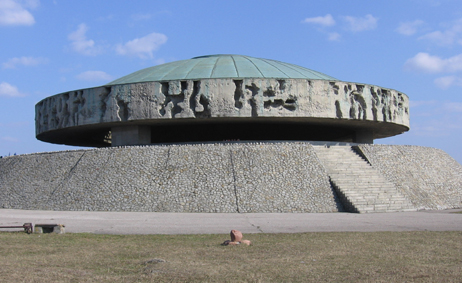 The mausoleum. Source: http://www.en.wikipedia.org.
The mausoleum. Source: http://www.en.wikipedia.org.Information
- Article by:
- Robert Jan Noks
- Translated by:
- Arnold Palthe
- Published on:
- 22-11-2017
- Last edit on:
- 10-04-2021
- Feedback?
- Send it!
Related sights
Sources
- library.thinkquest.org
- www.auschwitz.nl
- www.nizkor.org
- www.jewishvirtuallibrary.org
- www.silentwall.com
- www.edwardvictor.com
- nl.wikipedia.org
- www.angelfire.com
- www1.yadvashem.org
- www.holocaustresearchproject.org
- www.holocaustresearchproject.org
- www.motl.org
- www.scrapbookpages.com
- history1900s.about.com
- www.deathcamps.org

